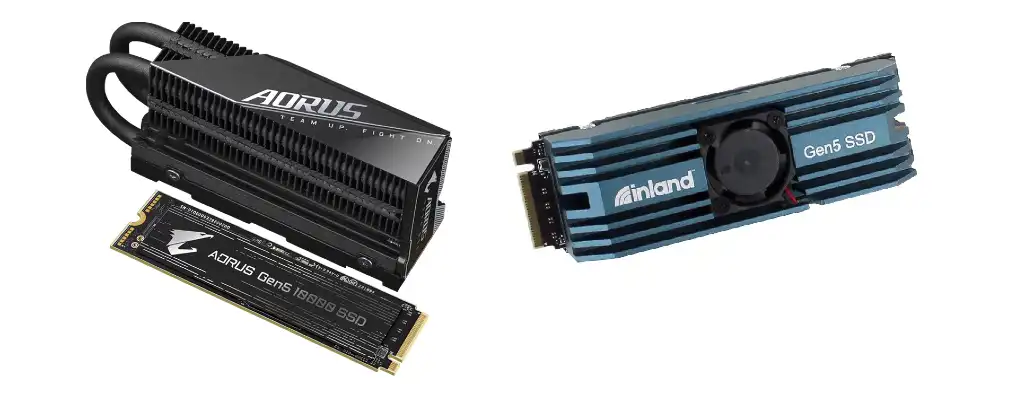First PCIe Gen5 SSDs Are Now Available
First PCIe Gen5 SSDs Are Now Available

We've been hearing about PCIe 5.0 for years now, and finally, consumer-grade PCIe 5.0 M.2 SSD drives have hit the U.S. market, well over a year since the first client PC platforms supporting PCIe Gen5 became available. The new SSDs offer higher performance than the flagship PCIe 4 drives they supplant, although they have some cons such as high prices and a greater need for good cooling. Meanwhile, the current crop of SSD drives are largely interim solutions; as faster NAND becomes more readily available later this year, SSD drive vendors will be able to push out even speedier SSDs based on the same controllers.
Gigabyte and Inland are the first companies to offer PCIe Gen5 consumer SSDs in the US. The Gigabyte Aorus Gen5 10,000 SSDs and the Inland TD510 SSDs are rated for maximum sequential read speeds of 10GB/sec and maximum sequential write speeds of 9.5GB/sec. Compared to the 7GB/sec or so limit of high-end PCIe 4 SSD drives, this is a notable improvement in sequential read speeds for the same form factor.
Both SSDs are based on Phison PS5026-E26 controller (Arm Cortex-R5 cores, special-purpose CoXProcessor 2.0 accelerators, LDPC, eight NAND channels with ONFI 5.x and Toggle 5.x interfaces at up to 2400 MT/s data transfer speeds) and 3D TLC NAND memory. To sustain high performance levels even under high loads, Gigabyte equipped its SSD with a massive passive cooling system with a heat pipe. Compared to the Gigabyte SSD drive, the Inland SSD comes with a rather compact cooling system, but this one is equipped with a small fan that is expected to produce a decent bit of noise. Since these are the first PCIe Gen5 SSDs for client PCs on the market and they carry 2TB of raw 3D NAND memory, it is not surprising that these SSDs are quite expensive.
While these current PCIe Gen5 SSDs are already hitting 10GB/sec reads, they are still leaving performance on the table. The NAND needed to make the most of the Phison E26 controller has only recently become available (and only in small quantities at that), so these initial SSDs are being held back by overall NAND throughput. With 8 channels of NAND to pull from, the E26 controller needs NAND running at 2400 MT/s in order to saturate its own internal throughput, but Phison has yet to validate SK Hynix’s 2400 MT/s NAND with its controller.
As a result, due to scarce availability of 2400 MT/s NAND, SSD makers have to use 1600 MT/s NAND with their PCIe Gen5 SSDs for now. Once faster NAND is more readily available, they can start using them to build E26-based SSDs that will be able to hit 12.3 GB/sec and make the most of the E26 controller, surpassing the performance of this initial generation of PCIe Gen5 SSD drives.
ACE Data Recovery team is looking forward to see the new PCIe Gen5 SSDs that use the 2400 MT/s NAND and will gladly help their owners with their SSD data recovery.
